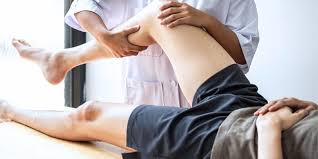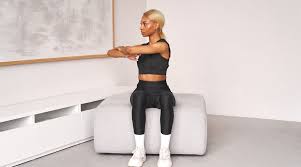Best Exercises For Stiff Neck
Best Neck Exercises For Stiff Neck
Exercises for stiff neck are essential for relieving discomfort and restoring range of motion. Whether caused by poor posture, stress, or long hours spent at a desk, a stiff neck can limit your daily activities.
Incorporating gentle stretches and mobility exercises can help reduce muscle tension, improve flexibility, and prevent future stiffness. With regular practice, these exercises can promote better neck health and overall well-being.
The best defense against injury is having strong, flexible muscles and joints that can tolerate stress and damage. The back and neck move in synchrony.
Long periods of immobility, such as spending hours in front of a computer screen, increase the risk of developing back or neck pain. The best defense against back and neck pain is movement. When you’re not using your computer screen, stretch often.
These simple neck pain exercises aim to assist manage mild to moderate neck discomfort episodes.
Neck Glide
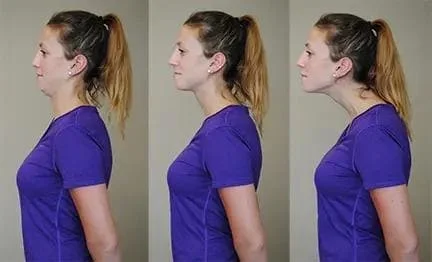
The neck glide is a mild range-of-motion stretching method that can assist increase the neck’s flexibility. Additionally, it can lessen soreness and stiffness.
However, you may safely and effectively stretch your neck muscles with neck slides. Your range of motion and flexibility may improve if you perform these exercises on a daily basis.
Steps To Follow:
- Sit up straight and keep your shoulders relaxed to perform a neck glide.
- Slowly tilt your forehead forward while tucking your jaw into your chest.
- Next, carefully lift your head to reveal the ceiling’s surface.
- Hold once more for a short while.
- Note: If you experience any pain while performing the workout, stop right away and contact your physician.
Neck Extension

To prevent damage, it’s crucial to begin slowly and gradually raise the intensity of your activities.
Your workouts can become more severe as you progress by increasing the resistance, holding the movements for longer, or adding more repetitions. But it’s crucial to pay attention to your body and quit if you begin to feel uncomfortable.
Steps To Follow:
- reclining on your stomach
- In front of you, extend your arms.
- After holding it for a few seconds, progressively lower it once more.
- Ten to fifteen times, repeat.
Neck Rotation

Make gentle, slow movements with your neck. Keep your head small and avoid tilting it to one side.
If your profession involves holding your head motionless for extended periods, such as when using a computer, this is a good exercise to do at work.
Steps To Follow:
- Focus on the immediate ahead to begin.
- Slowly turn your head to the left.
- Next, turn your head carefully to the opposite side.
- Hold for ten seconds.
- Return to the starting point.
- Next, do it ten more times.
Lateral Extension

A straightforward stretching technique that can assist improve the neck muscles’ range of motion and flexibility is lateral neck flexion, sometimes referred to as lateral neck bending.
Steps To Follow:
- Sit or stand straight, shoulders relaxed.
- Put your ear on your shoulder and tilt your head slightly to one side.
- Avoid placing your head in an unpleasant posture while maintaining a modest stretch.
- As you tilt your head farther, place your hand on the opposite side and gradually increase the resistance.
- This will allow you to continue the stretch and concentrate on the deeper neck muscles.
- Breathe steadily while maintaining the lateral flexion position for five to ten seconds.
- Gradually return your head to its initial neutral posture.
- With your head cocked towards the opposite shoulder, repeat the process.
- As your flexibility increases, increase the amount of repetitions you do on each side to five to ten.
Shoulder Shrugs
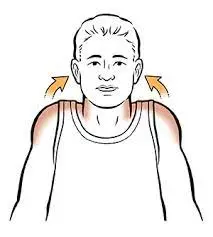
The shoulder shrug is a straightforward yet powerful exercise for strengthening the muscles in the upper back and shoulders. They are also quite effective in promoting better posture and relieving tension.
Steps To Follow:
- As you stand, keep your arms by your sides and place your feet shoulder-width apart.
- Raise your shoulders slowly in the direction of your ears, as though you were trying to touch them.
- After letting go a few times, gradually drop your shoulders once more.
- Ten to fifteen times, repeat.
Tilted Forward Flexion
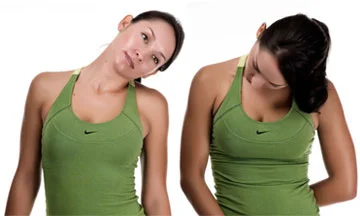
Bending the head and neck forward from a neutral position is known as tilted forward flexion. This movement is commonly seen in those who have poor posture or who spend a lot of time on their phones or laptops.
This simple exercise called tilted forward flexion, can help you stretch the muscles at the front of your neck and extend your range of motion. It’s also an excellent workout for reducing stiffness and soreness in the neck.
Steps To Follow:
- Maintain a straight back and relaxed shoulders whether you’re standing or seated.
- Carefully lower your chin to your chest if you have tension in the front of your neck.
- Hold the stretch for 5–10 seconds.
- Gradually revert to your initial position.
- Repeat ten to fifteen times.
Deep Stretching

Steps To Follow:
- Maintain proper posture when you tilt your head to rest against your shoulder.
- You can use your hand to exert pressure, as demonstrated.
- Hold for thirty seconds, three times.
Resistance Presses

Resistance pressing is one type of isometric neck workout that can aid in the development of stronger neck muscles. They may also aid in reducing stiffness and soreness in the neck.
Steps To Follow:
- Maintain head in a neutral position.
- For five seconds, press into your head in each of the following positions, then let go.
- Put a hand on your forehead to stretch. Stretch your hand behind your head.
- Take 30 seconds to complete this.
Towel Pull
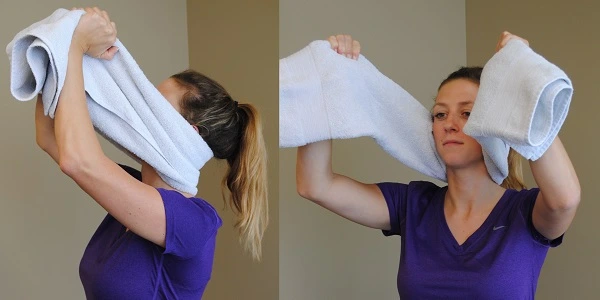
A cervical traction treatment called a towel pull is used to ease neck discomfort and stiffness. It’s an easy and efficient at-home workout routine.
Steps To Follow:
- Using your hands to secure the ends, wrap the towel over your neck.
- Roll your head over the fabric and slowly elevate your eyes as high as you can.
- To support your cervical spine while stretching your head back, apply light pressure on the cloth.
- Avoid remaining in that posture.
- Still, head back to where you were.
- Repeat ten times.
How Often to Perform Neck Stretches?
If you have a tight, painful neck that is difficult to move again, it may be helpful to try each of these stretches only once.
These stretches can be made more comfortable with additional practice, and they can even be extended to encompass multiple sets or ten-second holds. It’s imperative to remember that the goal is to improve neck flexibility and function rather than to constantly make things more uncomfortable.
Once the initial symptoms subside, long-term neck strengthening and stretching exercises can be done to lessen neck stiffness and discomfort. It lessens the chance of experiencing discomfort again.
When to Get Medical Help?
If you have a stiff neck along with other troubling symptoms including weakness, tingling in the arms, fever, nausea, dizziness, or headache, get medical help immediately once.
Additionally, before starting any fitness program, make an appointment with a doctor if the patient has a history of severe diseases or if the tightness or soreness in their neck doesn’t disappear after a few days.
Conclusion
A stiff neck is often accompanied by pain, stiffness, and limited neck range of motion. Although muscular sprains or strains are typically the reason, other possible causes include meningitis, whiplash, or arthritis.
Common signs of a stiff neck include soreness, stiffness, and limited neck range of motion, though these may differ according to the underlying cause. Relocating may cause minor to serious neck soreness. Additionally, you might be experiencing arm, shoulder, or headache pain.
Most stiff necks resolve on their own within a few days or weeks. Nonetheless, you ought to consult a physician if your discomfort is extreme or does not go away in a few days.
FAQs
Which treatment is best for a tight neck?
The greatest ways to quickly relax stiff neck muscles are often to stretch, apply a little heat, and take pain medicine.
Which workout is best for a tight neck?
Forward Slope Flexion
Using your fingers, gently massage your chin back until the nape of your neck expands gradually and painlessly. For no more than 20 seconds, maintain the position. Return to the beginning position after doing this a few times.
What is the duration of a stiff neck?
Neck pain from a muscular strain or tension usually goes away on its own in a few days. Exercise stretches, massage, and physical therapy are often beneficial when neck pain persists for longer than a few weeks. Sometimes steroid injections or surgery are required to relieve neck pain.
How do I relax my neck and shoulders?
Shoulder shrugs: Raise your shoulders slowly to your ears, then hold them there for five seconds before letting go. Repeat ten times over.
Tilt your head to one side and bring it near your shoulder to lengthen your ear. After five seconds of holding, switch sides. On each side, repeat five times.
References:
- Neck Stretches for Pain Relief: How to Stretch Your Neck. (2024, June 30). WebMD. https://www.webmd.com/fitness-exercise/fitness-neck-stretches
- Meyler, Z., DO. (n.d.). 4 Easy Stretches for a Stiff Neck. Spine-health. https://www.spine-health.com/wellness/exercise/4-easy-stretches-stiff-neck
- Sharma, R. (2023, December 13). 9 Best Exercises For Stiff Neck – Mobile Physio. Mobile Physiotherapy Clinic. https://mobilephysiotherapyclinic.in/best-exercises-for-stiff-neck/


